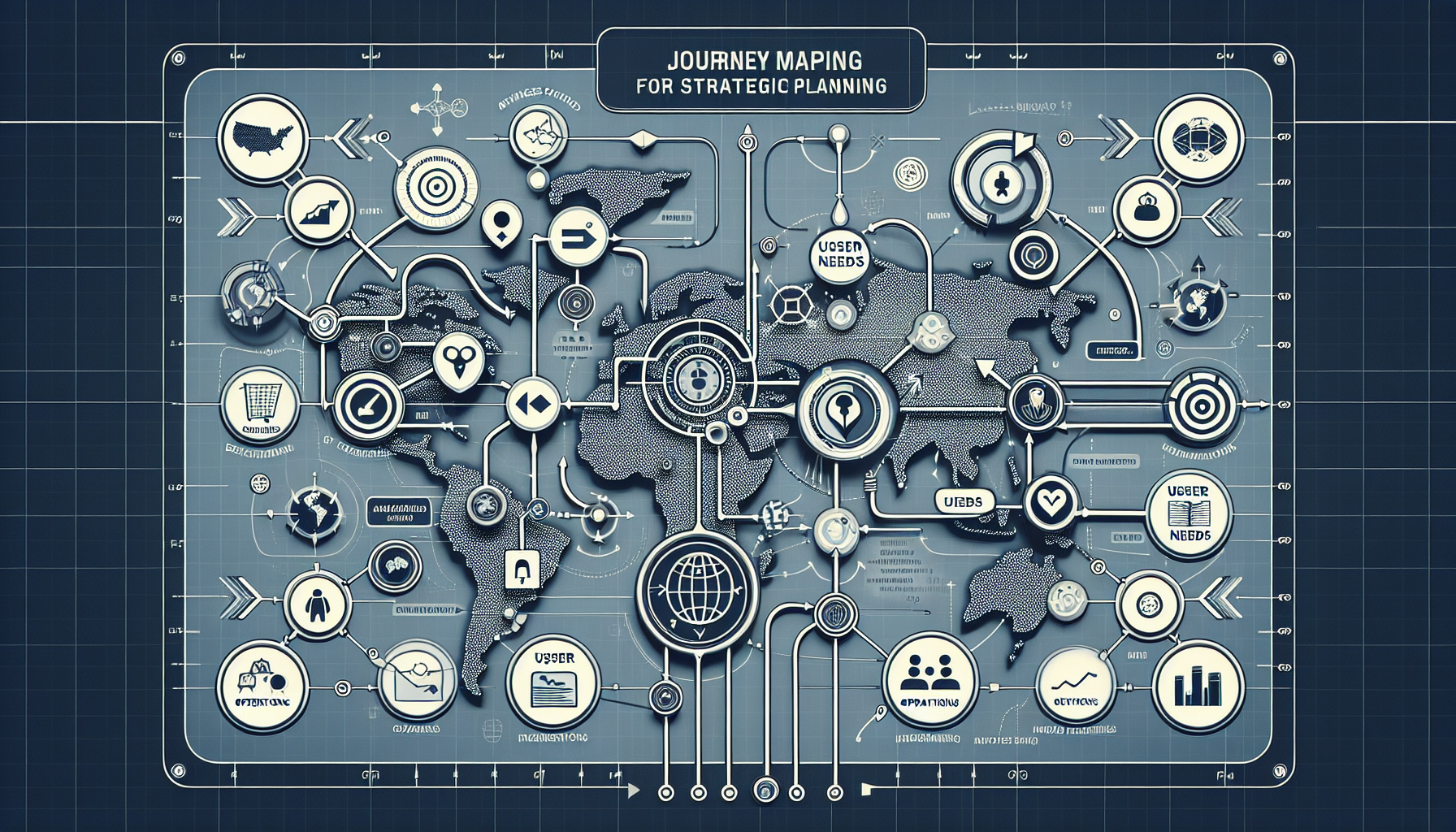“Unlocking Growth: Transform Strategic Planning with Journey Mapping”
In the heart of modern business success lies an unfolding story—a narrative enriched by strategic planning and user experience. This can be effectively captured through journey mapping, a tool that transforms strategic planning into a visual and user-centric tapestry. Journey mapping seamlessly aligns user experiences with business objectives.
To start, understanding your user is crucial. Think of it as painting a vivid portrait where each feature reflects your audience’s specific needs and challenges. Creating detailed user personas is essential; they offer deep insights into your customers’ motivations and obstacles, enabling you to design interactions that are not merely functional but also highly engaging and satisfying.
Journey mapping is akin to navigating through a bustling city during rush hour, where each interaction forms a crucial part of the overall user journey. This involves mapping every customer touchpoint with your business—be it through a website interface or customer service interactions. By plotting this journey comprehensively, you can identify points where users might face obstacles or frustrations, and strategically address these areas to enhance usability.
Beyond improving user experience, journey mapping offers significant strategic advantages. By ensuring that products and services align with user expectations, companies can optimize their resources to have the highest impact. This approach not only boosts user satisfaction but also enhances competitive advantage in the marketplace.
Delve deeper into the art of journey mapping through the blog "Unveiling the Path to Success: Mastering User Journey Mapping." It’s a practical resource that complements these insights, offering tactics for incorporating journey mapping into strategic planning.
Incorporating journey mapping into strategic planning resembles a conductor harmonizing an orchestra. Every department and process collaborates to create a resonant and compelling user experience. This harmony extends beyond journey mapping to include UI/UX design, a critical element of business strategy. Explore "Crafting Digital Success: The Strategic Symphony of UI/UX Design and Business Growth" for more on how these elements drive business growth.
Journey mapping serves as a pivotal framework for transformation, demanding a flexible approach. Continuously updating and refining journey maps to adapt to changing user needs and technological advances is vital. This adaptability is key to maintaining a competitive edge and building enduring customer relationships.
However, creating the map is just the beginning. Insights gained must be translated into action, ensuring that the customer’s voice is forefront in product development. This approach guarantees that the end product resonates with users. For strategies on implementing feedback, refer to "Mastering Software Success: The Art of Testing and User Feedback."
Moreover, journey mapping plays a crucial role in decision-making by giving a holistic view of the user experience. This comprehensive approach empowers business leaders to make informed decisions aligned with user expectations and strategic goals, optimizing both satisfaction and business outcomes.
At its core, journey mapping bridges strategy and empathy, pushing businesses to view experiences through their users’ eyes. This shift transforms planning from a rigid process into a dynamic, user-focused dialogue.
Ultimately, journey mapping represents a philosophy placing the user at the center of business strategy. By adopting this approach, businesses can create efficient and deeply meaningful experiences. For further insights, explore our book “Software Simplified: Navigating Tech Development,” available here, which explains aligning operations with user-centric design principles.
As we navigate the intersection of user experience and strategy, remember the importance of prioritizing user needs in every facet of business innovation. Blogs like "Crafting Software with Heart: Elevating User Experience through Design" emphasize this, offering insights into how a user-centered approach drives growth and builds sustainable, long-lasting customer relationships.






